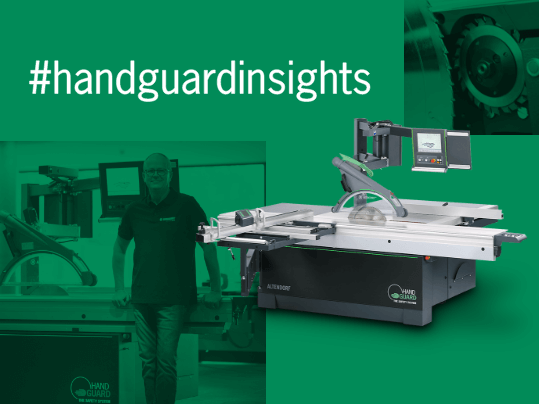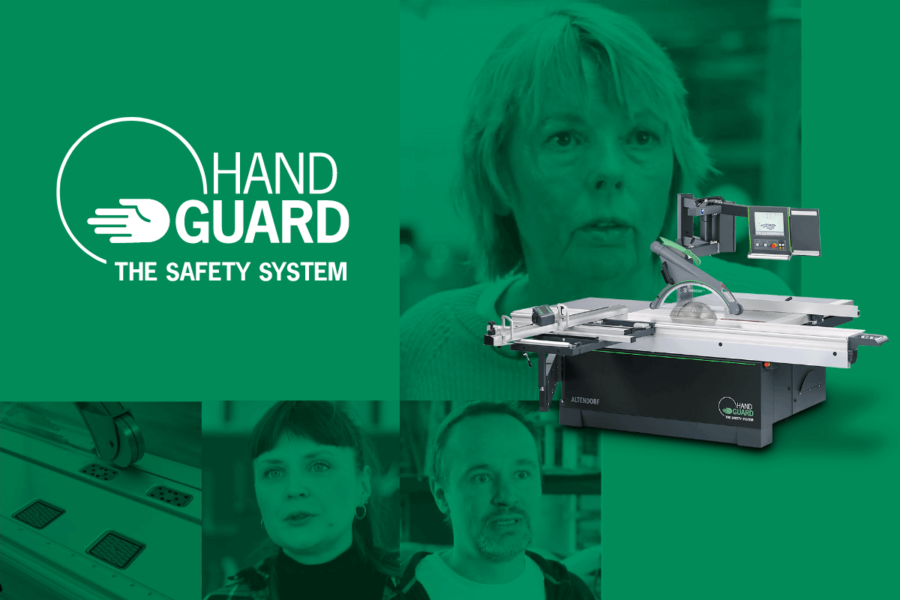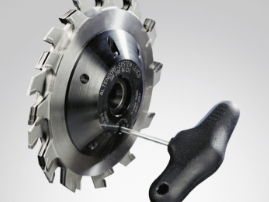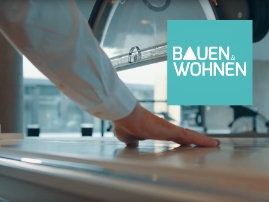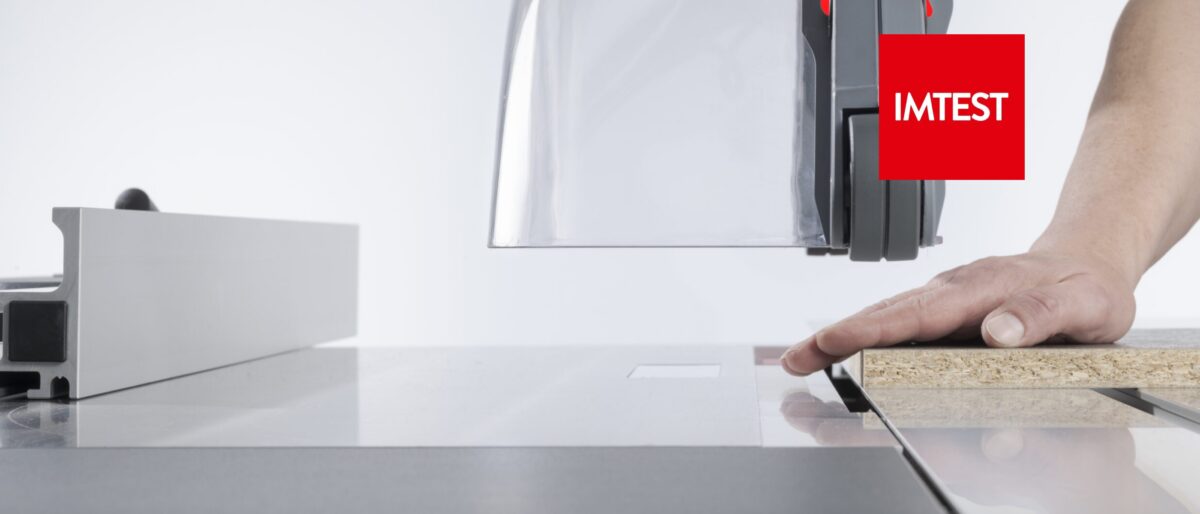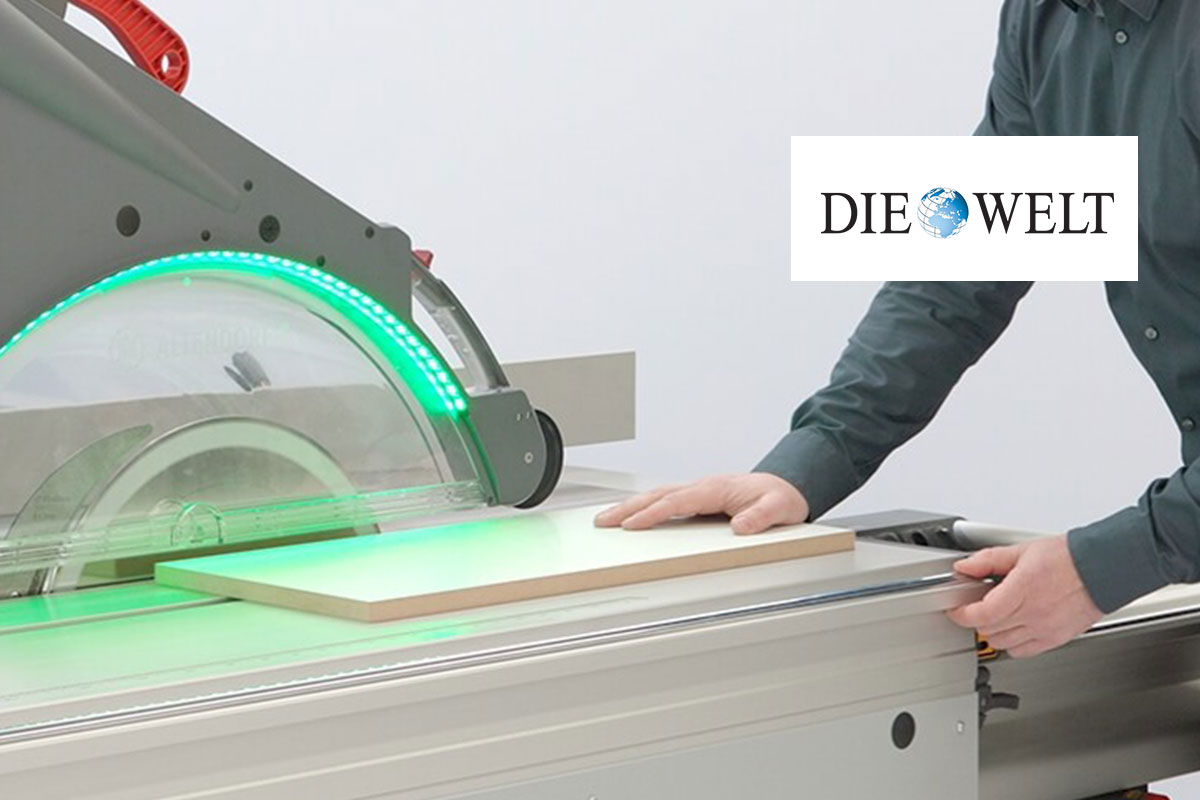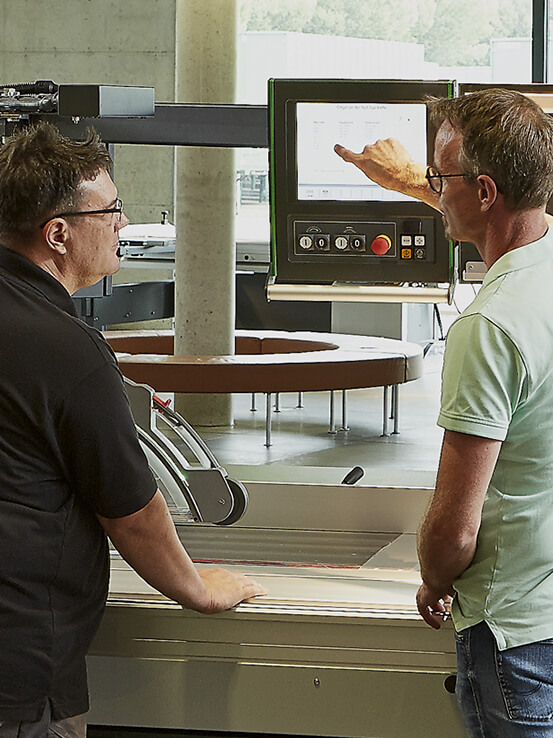World First: HAND GUARD protects the most important thing in the trade – the hands
- Press review
from IMTEST 11.05.2022 – 11:35 AM
The Hand Guard system from the Altendorf Group is an optical safety system for circular saws. It detects hazards even before potential contact and makes the saw blade disappear via rapid lowering.

Wilhelm Altendorf had a revolutionary idea in Berlin in 1906. He developed a circular saw that guides the workpiece lying on a sliding carriage to the saw blade. Since then, the name “Altendorf” has been synonymous with sliding table saws, making the company the world market leader. To this day, the Altendorf Group pursues the goal of providing craftsmen with safe technology to prevent dangerous situations. The latest innovation: Hand Guard.
Hand Guard: Optical system for accident prevention
This world first from Altendorf is a safety system that has been awarded the OWL Innovation Prize. The innovative safety system relies on early optical detection. Two cameras detect the danger zone of the circular saw rather than capacitive sensors that measure the conductivity of the skin. The special feature of Altendorf’s world first: Hand Guard reacts before the hand comes into contact with the saw blade! This makes the optical method much faster than all known capacitive systems. This is because these only stop the saw blade when there has been brief contact between the skin and the saw blade.
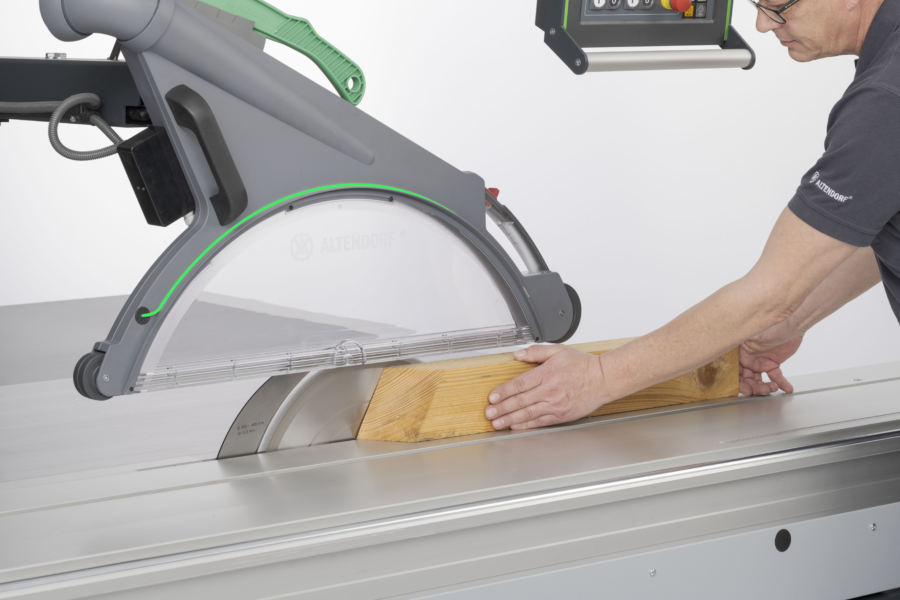
Hand Guard: Lightning-fast guardian angel
The Hand Guard system stops and lowers the saw blade unit within a quarter of a second -even before a dangerous situation arises. Altendorf relies on an optical system consisting of two cameras located above the sliding carriage. Software detects previously defined hazards from the camera images and stops the saw blade by rapid lowering. The sensor-controlled lowering movement not only protects the operator, but also the machine, saw blade and workpiece.
Occupational safety is an important topic in the trade, because accidents and injuries cannot be completely avoided. To prevent the risk of injury when operating a sliding table saw, Altendorf has installed a three-stage safety system. It reacts as soon as a hand comes dangerously close to the saw blade.
Stage 1: LEDs on the protective hood no longer light up green, but red.
Stage 2: The saw blade unit noticeably reduces speed, which the operator feels through haptic resistance.
Stage 3: The system activates the total stop and lowers the unit within a quarter of a second before the hand touches the saw blade.

New standard in occupational safety
After the emergency stop, the sliding table saw is immediately ready for use again. According to the company, the system requires only 10 seconds to be ready for operation again. The Hand Guard also works with suitable work gloves and is said to be insensitive to damp wood, conductive materials and coatings. The Altendorf Group hopes the innovative safety system will set a new standard to improve occupational safety in the woodworking industry worldwide. To this end, IMTEST spoke with Managing Director Peter Schwenk about the innovative world first.

IMTEST: How did the idea for the Hand Guard come about?
Peter Schwenk: According to DGUV figures, up to 120 reportable accidents involving circular saws occur every month in Germany. Hands are affected in 95% of the cases. 47% of these result in a serious injury with retirement. We developed the first Altendorf-type sliding table saw in 1906 and since then have always strived to make our customers’ lives easier and safer through technical innovation. A logical consequence of this was the development of the Hand Guard.
What was the biggest challenge in the development?
Until now, there was no comparable AI- and camera-based safety assistance system for sliding table saws. Existing solutions are based on other approaches and are correspondingly limited in their protective effect. Developing an optical system such as Hand Guard, which can reliably detect hands and hand-like shapes and initiate appropriate protective measures in the necessary short time, was a major challenge overall and took several years of research and development work. We are therefore all the more pleased to be the first system on the market to be officially certified with the GS seal by the German Employers’ Liability Insurance Association for Wood and Metal. Hopefully, this will create an industry-wide standard for safe working with sliding table saws in the future. Similar to the airbag, which today must be installed in every vehicle.
From what size of company is the Hand Guard system economically viable?
There is no price for a lost finger, an irrevocably damaged hand, which sometimes results in retirement and possibly inability to work and the economic consequences. Thus, even in small businesses, Hand Guard can reliably prevent that one careless movement, that one possible accident.
Is the Hand Guard system also suitable for other industries such as plastics or metal processing?
The Hand Guard system is based on our successful and popular “F 45”, which is now synonymous with a sliding table saw throughout the industry, and can therefore also process other materials such as non-ferrous metals and plastics. Hand Guard can also process all other materials, such as wet wood, without any problems. There are no restrictions here.
Is training necessary before commissioning?
On delivery, the proven and familiar commissioning procedure is carried out by a certified Altendorf service technician. Users are of course also trained and prepared for the operation of Hand Guard here.
Contact person


